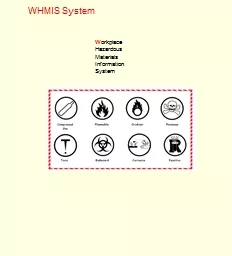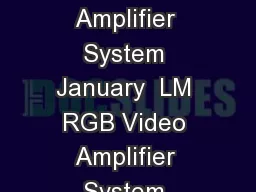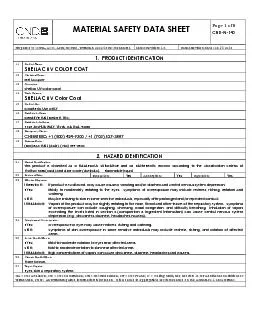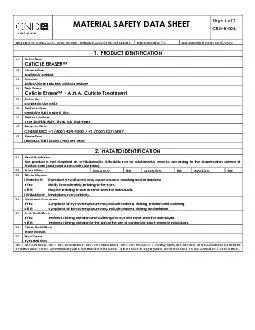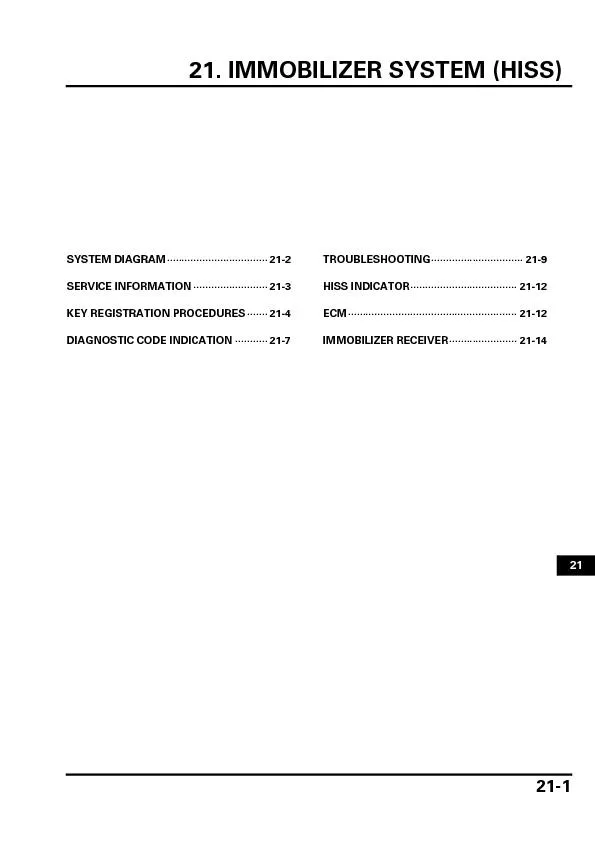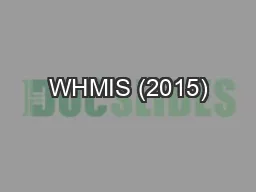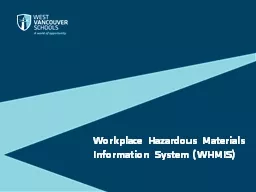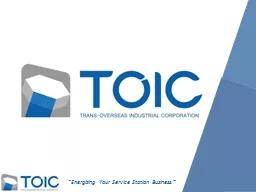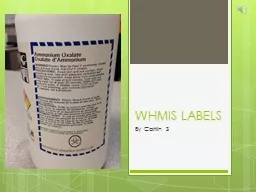PPT-WHMIS System
Author : lindy-dunigan | Published Date : 2016-05-13
W orkplace Hazardous Materials Information System FIRST AID E YES Flush with water for 15 minutes Consult with physician SKIN Flush with water as per sulphuric
Presentation Embed Code
Download Presentation
Download Presentation The PPT/PDF document "WHMIS System" is the property of its rightful owner. Permission is granted to download and print the materials on this website for personal, non-commercial use only, and to display it on your personal computer provided you do not modify the materials and that you retain all copyright notices contained in the materials. By downloading content from our website, you accept the terms of this agreement.
WHMIS System: Transcript
Download Rules Of Document
"WHMIS System"The content belongs to its owner. You may download and print it for personal use, without modification, and keep all copyright notices. By downloading, you agree to these terms.
Related Documents

